
From the Dinosaur Collector: The Ice Ages
of Europe, Asia and North America are often called The Land of the Mammoth. While there have been several Ice Ages the most famous is the Late Pleistocene Ice Age. The last Ice Age started about 70,000 years ago and ended about 10,000 years ago The best known of the prehistoric elephants is Mamothus primigenius (Woolly Mammoth) at 9 to 12 feet tall, weighting7 to 9 tons it is animal most identified with this epoch. Updated 9/112/08
For more diorama pages and company reference pages
more
Mammoths shared the North America with the American Mastodon, Bison, Stage Moose, Sagia Antelope, Musk Oxen and eventually man.

North American Ice Age as presented in American Natural history Museum in New York diorama. This small diorama window is hidden away in the modern mammal wing at the Museum.
The Ice Age created great seas of grass that supported Mammoths and their neighbors. As the world warmed the dry grasslands were replaced by the marshy tundra in the north. This creates a lower nutritional value forage that would favor smaller animals and ruminants. Ruminants ( Deer, Cattle, Goats and Camels) are artiodactyls having complicated stomachs and cud-chewing habits that allows them to extract more food value from the same forage. The Elephants, horses and rhinos disappear while the bison (cattle), caribou (deer) and musk oxen (goat) remain albeit smaller. One theme in the age of mammals is the steady decline of the non ruminate herbivores.
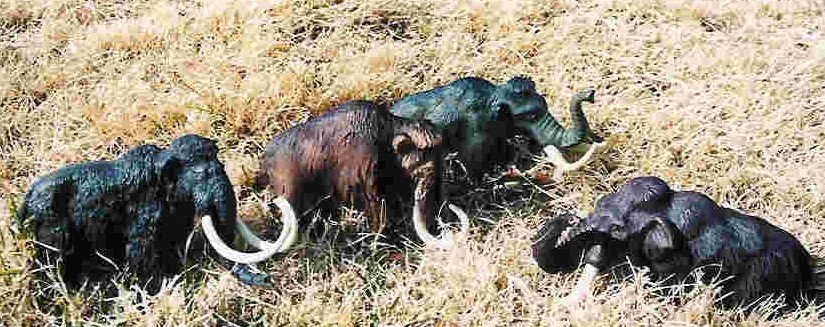
Carnegie Mammoth, Schleich Mammoth, Bullyland Mammoth and Safari Missing Links Mammoth
Woolly Mammoth a relative of the Indian Elephant was found across the tundra of the Northern Continents They are though to have lived in herds of females and their young like today's elephants. Males were either solitary or lived in bachelor herds.
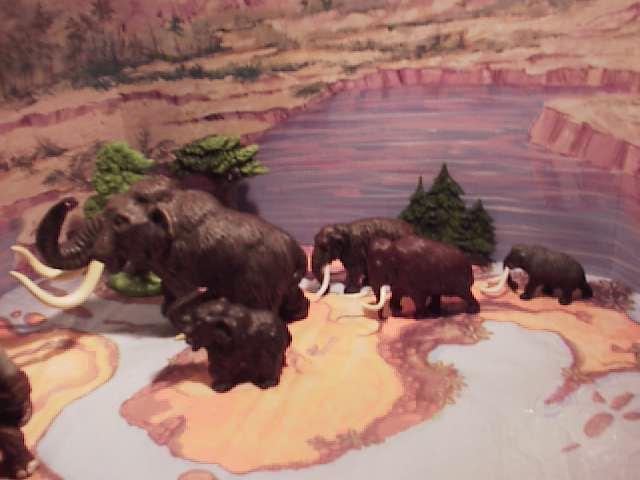
Carnegie Safari Woolly Mammoth with calf followed by the Marolin, Invicta and Bullyland versions.
Woolly Mammoth was a cold climate dweller equipped with a thick layer of fat for insulation, and an exterior of long black hair. The Woolly Mammoth was smaller than most mammoths, and had a hump of fat behind its domed head. It fed on low tundra vegetation in which it scraped away snow and ice from with its ivory tusks. They shared the grasslands with at least 3 different species of musk ox .

Starlux Woolly Mammoth.and the retired Starlux Woolly Mammoth to the back and last the Invicta British natural History Museum painted . Musk oxen are from Friends of the Earth series, Starlux and Safari.
In the Pleistocene musk oxen were not confined to the tundra. The 3 species varied in size and range only the tundra specialized species survived.

Musk oxen are from Starlux, Safari and Friends of the Earth series,.
The majestic deer Megaloceros looks out at the landscape. The antlers spread 11 feet from tip to tip. These huge deer inhabit the lowland of Eurasia and live in small family groups.
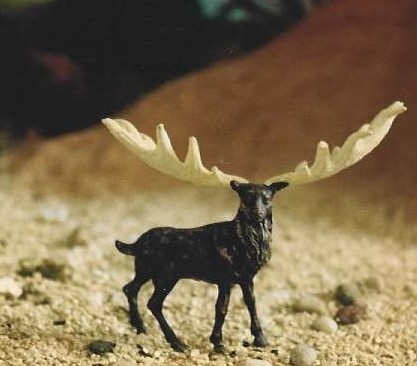
Riff's Lost World Starlux Megaloceros. Custom diorama submitted by Riff Smith photo by Bob.
Mammoths coexisted with humans. Much of our knowledge of mammoths is from cave drawings found in France and Spain and from mummified mammoths found in Siberian ice. The long fur is reddish brown.
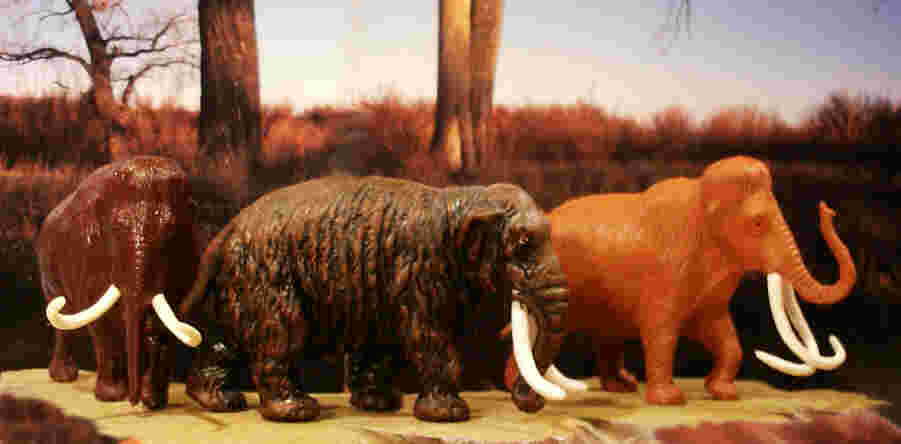
Unpainted Invicta, Marolin, Funrise Mammoths. They remain the most common and popular of prehistoric animal figures and toys. Only the Smilodon, Americas saber tooth tiger is as commonly reproduced.
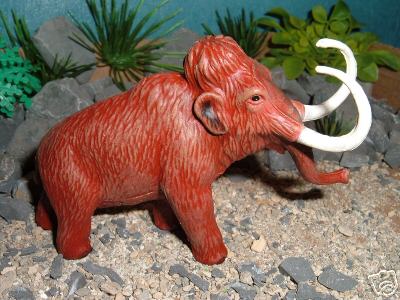
Recast Marx Mammoth custom painted by Fred R. Hinojosa.
Return to Cenozoic Menu

 Click
on the Site A icon left for more diorama listed by location Click on the Site B
icon to the right for Dioramas organized by period or by manufacturer.
Click
on the Site A icon left for more diorama listed by location Click on the Site B
icon to the right for Dioramas organized by period or by manufacturer.